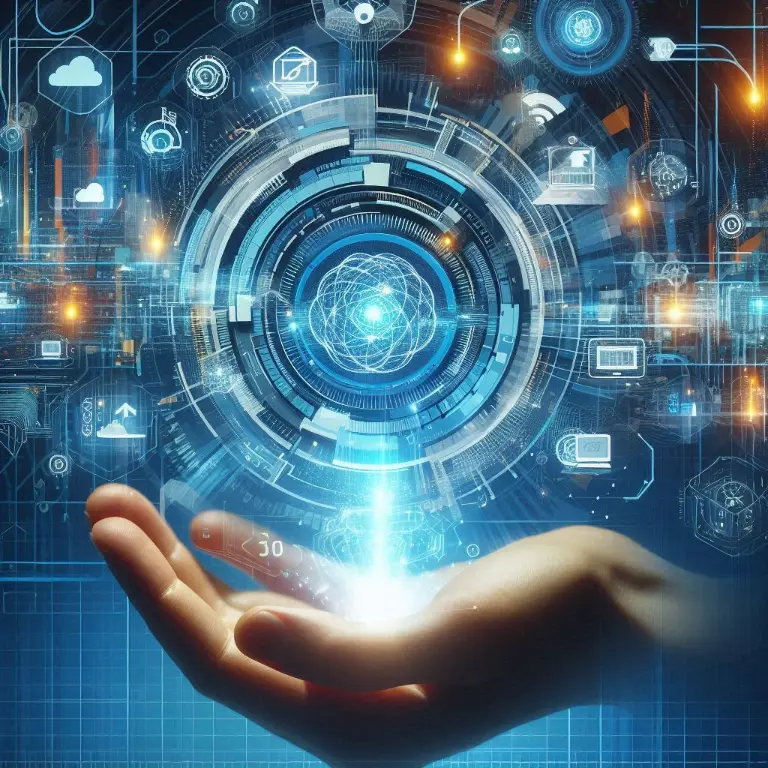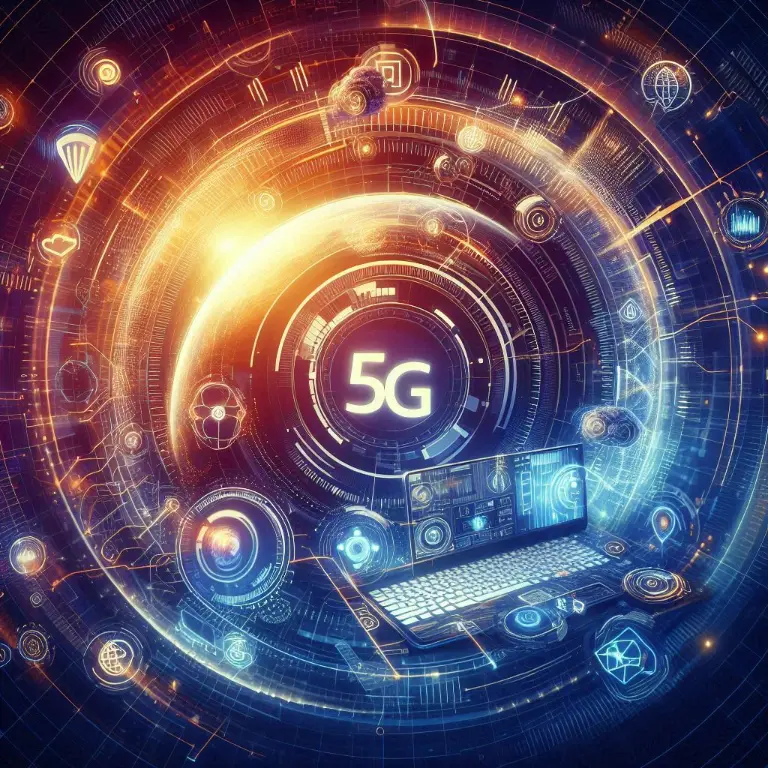The Internet of Things (IoT) is a game-changer that has the power to revolutionize numerous industries, including web development. An IoT company in Malaysia like Segwitz specialise in transitioning the physical into the digital realm through innovative vertical solutions.
The ever-growing network of physical devices connected to the internet for data sharing has transformed how we interact with technology. By 2025, the economic impact of IoT is projected to reach between $4 – $11 trillion, marking an undeniable shift in the digital landscape.
The influence of IoT in web development extends from changing user-device interaction to amplifying data processing and security capabilities.
This transformative influence of IoT on web development, and the subsequent increase of IoT companies in Malaysia, is becoming highly apparent.
IoT: A Catalyst for Transformative User Interactions
IoT has revolutionized the way users interact with websites and web applications. It extends the reach of web development beyond desktops and mobile screens to an array of connected devices.
Smart homes, wearables, and even connected cars can access web services, shifting the paradigm of web interactions.
Web apps linked to IoT devices have become the control centers for connected ecosystems. From monitoring an office’s temperature to analyzing health data from wearable devices, these IoT-empowered web apps are no longer just information presenters but function as interactive control interfaces.
This trend necessitates a shift in web development strategies. Web developers must adopt techniques that facilitate interaction between diverse IoT devices and web platforms. As more companies seek to harness IoT, more companies seek the expertise of specialised IoT companies in Malaysia, highlighting the need to pivot to this new frontier.
esigns need to be versatile and dynamic, adapting to the unique display and interaction requirements of varying IoT devices.
The Age of Data: IoT’s Influence on Data Handling

Web development is entering the age of data. Traditional web development primarily focused on the presentation of data.
However, with IoT’s advent, web applications are becoming critical components in collecting, processing, and analysing vast data volumes.
IoT systems leverage data from various sources, typically in large volumes and at high velocities.
With the number of connected IoT devices projected to reach nearly 75 billion by 2025, the amount of data to be managed is truly staggering.
Companies in Malaysia now need to focus more on developing network reliability and scalability, as processing vast amounts of IoT data and transmitting it through the cloud network becomes central to web applications’ roles.
Your developers require proficiency in languages and frameworks that enable the development of scalable IoT applications, which include but are not limited to:
- AngularJS
- Laravel, Ionic
- Java
- Javascript
- C
A reputable IoT company in Malaysia like Segwitz could help you scale seamlessly should you not have the capacity for it.
The Evolution of UI/UX: Riding the IoT Wave
The integration of IoT in web development is heralding a new era of intelligent and dynamic user interfaces (UI).
IoT-enabled devices come with a variety of display characteristics, demanding responsive designs that cater to a range of screen sizes and orientations.
Moreover, IoT allows for richer and more interactive user experiences (UX).
For instance, a user interacts with a website or a web app through voice commands using a smart speaker, which requires web developers (or outsourced IoT companies) to design voice-command-friendly UI/UX.
Developers must constantly adapt and innovate to stay on top of these emerging trends.
Chatbots: IoT’s Gift to User Interaction
Chatbots truly exemplify how IoT has transformed user interactions in web development.
Powered by machine learning algorithms, chatbots can respond to user queries promptly and without human intervention, offering superior user experience and efficient customer support.
With IoT, voice-enabled chatbots have become a reality, significantly enhancing user engagement and interaction with websites.
For more, consult with an IoT company in Malaysia to get more custom or cross-functionality for this application.
Emphasizing Cybersecurity: A Critical Facet of IoT Web Development

tIoT’s data-centric nature elevates the importance of cybersecurity in web development. Web applications dealing with IoT require robust security mechanisms to protect user and business data.
This includes safeguarding data in transit and at rest, monitoring for potential threats, and incorporating quick incident response systems.
IoT also offers advanced identification and monitoring techniques to detect data misbehavior, thereby enhancing web application security.
As cyber threats evolve, companies should leverage the expertise of IoT companies in Malaysia to incorporate advanced security strategies into IoT web development.
The Malaysian Context: IoT in Web Development
In Malaysia, the influence of IoT on web development is quite pronounced. As the country embraces digital transformation, the integration of IoT in web development is becoming increasingly important.
IoT has been recognized as a key enabler of Malaysia’s digital economy, pushing the boundaries of conventional web development.
New IoT companies in Malaysia are implementing IoT in innovative ways and driving industry growth. From smart city initiatives to healthcare and education, IoT is making a significant impact on how web applications are designed and developed.
However, there are certain challenges to overcome. Issues of data privacy, network infrastructure, and a lack of standardization in IoT implementations pose hurdles.
But with the right policy frameworks, industry collaboration, and a focus on skills development, Malaysia is well-positioned to ride the IoT wave in web development.
The Changing Landscape: Key IoT Skills to Look for In a Partner
As IoT continues to revolutionize web development, the skills required for a suitable partner are also evolving. Companies require technology partners in IoT companies in Malaysia equipped with the following skills to navigate the IoT-dominated landscape:
| Skill | Importance |
| Data Analytics | With IoT generating massive data, your technology partner must understand how to analyze this data and draw meaningful insights. |
| Cloud Computing | As IoT relies heavily on cloud platforms for data storage and processing, proficiency in cloud computing becomes crucial for companies. |
| Networking | Understanding network protocols is key as IoT devices communicate over networks. |
| Security | Given the vast amounts of data involved in IoT, expertise in cybersecurity is paramount to ensure data integrity and privacy. |
| Machine Learning | Knowledge of machine learning algorithms can enable your tech-enabler to build smarter, automated systems that improve over time. |
Real-World Implications: IoT Web Development in Malaysia
The forward momentum of IoT in Malaysia is significant, with potential implications across various sectors.
Here are some use cases that, with the expertise of an IoT company in Malaysia, redefine how businesses operate:
1. Smart Retail
In the retail sector, an IoT-enabled web app can transform the shopping experience. IoT devices such as smart shelves, beacons, and RFID tags, integrated with a web app offer real-time inventory management, personalized customer service, and streamlined checkout processes.
Connected Healthcare: IoT significantly enhances healthcare services in Malaysia. An IoT-integrated web app enables remote patient monitoring, provides health analytics, and facilitates telemedicine services.
2. Smart Manufacturing
In manufacturing, an IoT-powered web app can monitor and control production processes in real-time, predict equipment failures, and optimize energy consumption, leading to improved productivity and cost savings.
3. Transportation and Logistics
In the transportation and logistics sector, IoT can offer real-time tracking of vehicles and cargo. Integrated with a web app, it can provide valuable insights on optimal routes, vehicle maintenance, driver performance, and more.
Upcoming Industry Trends: Steering the IoT Revolution

As IoT continues to expand its reach and influence, several industry trends are beginning to emerge. Apart from the increasing number of specialised IoT companies in Malaysia, these trends forecast the future of web development.
1. Edge Computing
As the number of IoT devices increases, so does the amount of data generated. Edge computing, which involves processing data closer to the source (i.e., the IoT device), is expected to become more widespread.
This helps reduce latency, improve speed, and lessen the demand for network bandwidth.
2. 5G and IoT
The advent of 5G technology will have significant implications for IoT devices, with faster data transfer speeds, lower latency, and the ability to connect more devices simultaneously.
This opens up new possibilities for real-time applications and complex IoT setups.
3. AI and Machine Learning Integration
The integration of Artificial Intelligence (AI) and Machine Learning (ML) with IoT is set to become more prominent.
The vast amounts of data generated by IoT devices provide a rich resource for AI and ML algorithms, potentially leading to more intelligent and responsive web applications.
Conclusion: Embracing the IoT Revolution in Web Development
The IoT revolution is here, reshaping the web development landscape in many profound ways. IoT companies in Malaysia are actively shaping how web applications are developed and transforming how users interact with these applications.
The future of web development lies in embracing this change – integrating IoT in a way that enhances user interaction, facilitates efficient data handling, and ensures robust security.
In an age where the physical and digital worlds are converging, the amalgamation of IoT and web development is an unmissable opportunity for developers, businesses, and nations.
The road to the future is paved with connected devices, and it’s a road that promises to lead us to an era of unprecedented digital innovation.
As Malaysia embarks on its digital transformation journey, SegWitz is committed to integrating IoT into web development to help businesses harness the power of this transformative technology. Consult with us here.





 Booking System
Booking System eCommerce
eCommerce On-Demand Services
On-Demand Services Community App
Community App Ordering App
Ordering App Loyalty App
Loyalty App Online Learning
Online Learning Directory
Directory Marketplace
Marketplace SaaS
SaaS P2P Platform
P2P Platform eHailing
eHailing Healthcare
Healthcare Finance
Finance Logistics
Logistics Education
Education Food & Beverage
Food & Beverage Retail
Retail FMCG
FMCG Sports
Sports Travelling
Travelling Manufacturing
Manufacturing Renewable Energy
Renewable Energy Mobile Application Development
Mobile Application Development Web Application Development
Web Application Development Source Code Review
Source Code Review Internet of Things (IoT)
Internet of Things (IoT) Cyber Security
Cyber Security SegWitz SandBox – Dev-Team as Subscription
SegWitz SandBox – Dev-Team as Subscription SegWitz Streamline – SOP Systemization
SegWitz Streamline – SOP Systemization SegWitz ScaleUp – Tech Transformation of SME & PLC
SegWitz ScaleUp – Tech Transformation of SME & PLC SegWitz StartUp – MVP & Scaling
SegWitz StartUp – MVP & Scaling